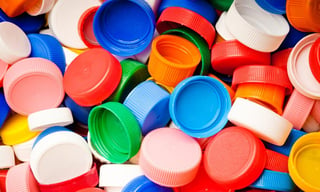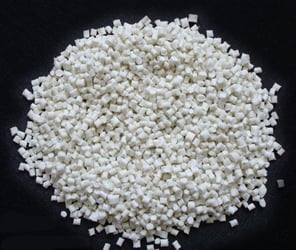Many molding processors acknowledge the need to dry resins, especially hygroscopic materials, but many do not
 understand the reason why or how this process actually works. The concepts of residence time and temperature are very important for them to understand.
understand the reason why or how this process actually works. The concepts of residence time and temperature are very important for them to understand.
If I had a dollar for every time a process guy told me “the material is dry, I felt it and it’s hot,” I would be a very rich man. Warm or hot material does not mean it’s dry. There is zero correlation between hot and dry material.
Proper residence drying time is normally supplied by your material supplier. This information should be listed and readily available in the process book at the molding machine as well as at the dryer location.
3 Key Drying Factors
That being said, there are a few topics to consider when you’re having issues:
1. Residence Time
Residence time and maintaining a constant drying temperature are key factors in a properly dried material. The material pellet will not release the moisture encapsulated within the pellet without reaching the proper temperature and for the correct amount of residence time. Regrind added to your resin can also create issues, depending on pellet consistency and amount of fines in regrind. Larger pellets will take longer to dry, fines will absorb moisture faster and more readily then pellets.
2. Dryer Maintenance
Dryer maintenance is a must. Moisture can be put right back into your resin if proper maintenance is not performed. Filters must be on a regular cleaning schedule and cleaned per schedule. Desiccant must be properly maintained and replaced with new desiccant when needed. Temperatures of regeneration beds must be set at 150°F or below and regeneration process functioning.
3. Moisture Content
Many molding defects are related to moisture content that is too high or too low in the material. Most defects are caught at the molding machine due to the visual appearance. The biggest problems are those defects like brittleness and decomposition that are not caught until they have been in the field for a short amount of time, creating replacement of product or even total recalls. Listed are defects caused from under drying or over drying: splay, blisters, clarity, gloss, discoloration, decomposition, brittleness, just to name a few.
Regular scheduled moisture checks should be performed with a moisture analyzer and documented on all of your processes that require materials to be dried. This is good data to have if there are customer complaints or even recalls.
If you’d like more information on how to improve efficiency, reduce wasted resin, minimize scrap after color and material changes in your facility, contact me directly, or download this Tipsheet on how to improve your process efficiency.








Comments